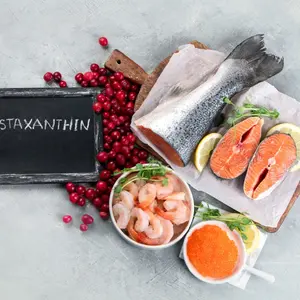

Food, Farming and Nutrition

Food, Farming and Nutrition
Happy Earth Day - Continue Support for Organic Farming
Celebrate Earth Day by applauding and continuing to support the expansion of organic farming for individual and planet health!
To keep up with consumer demand for organic products, organic farming has increased substantially in the past decade. What are the benefits of organic farming, and where are the most organic farms located in the U.S.?
Why Organic Farming?
As opposed to large-scale industrial agriculture, which uses techniques like genetic modifications, monoculture farming, and synthetic fertilizers and pesticides, organic farming is an approach to agriculture that attempts to mimic nature and natural processes and conserve biodiversity and natural resources when raising crops and livestock.
Organic farming practices are designed to meet the following goals:
- Enhance soil and water quality
- Reduce pollution
- Provide safe, healthy livestock habitats
- Enable natural livestock behavior
- Promote a self-sustaining cycle of resources on a farm
Organic farming techniques may appeal to environmentalist consumers due to its sustainable approach to agriculture that limits pollution, increases carbon capture, and promotes biodiversity. For meat and dairy consumers, the organic farming approach to livestock production is considered to be a more ethical and humane way to raise animals because they are given more outdoor access (pasture fed for at least 30% of livestock’s nutritional needs during gazing season), fed organic feed, and given fewer hormones and antibiotics.
For health-conscious consumers, the potential benefits of organic food include:
- Higher nutrients—Studies have shown small to moderate increases in some nutrients in organic produce, including flavonoids, which have antioxidant properties.
- Higher levels of omega-3 fatty acids—The feeding requirements for organic livestock farming (e.g., primary use of grass and alfalfa for cattle), result in generally higher levels of omega-3 fatty acids in organic meats, dairy, and eggs.
- Lower toxic metal— Cadmium is a toxic chemical naturally found in soils and absorbed by plants. Studies have shown significantly lower cadmium levels in organic grains, but not fruits and vegetables, when compared with conventionally grown crops. The lower cadmium levels in organic grains may be related to the ban on synthetic fertilizers in organic farming.
- Lower levels of pesticide residue—Compared with conventionally grown produce, organically grown produce has lower detectable levels of pesticide residue. Organic produce may have residue because of pesticides approved for organic farming or because of airborne pesticides from conventional farms.
- Less occurrence of antibiotic-resistant bacteria—Meats produced conventionally may have a higher occurrence of antibiotic-resistant bacteria. The overall risk of bacterial contamination of organic foods is the same as conventional foods.
Consumer demand for organic products has more than tripled over the past decade or so, rising from $3.1 billion in 2008 to $9.9 billion in 2019, with milk, chicken, and eggs the top-selling organic products. Over the same span, the number of organic farms has also increased; in 2008, there were 10,903 organic farms in the U.S. covering around 4 million acres of farmland, and in 2019, there were nearly 16,500 organic farms on 5.5 million acres.
Where are these farms in the U.S.?
States with the Most Allocated Organic Farmland
Organic farming hasn’t taken hold everywhere in the U.S., and many large-scale agricultural operations in the Midwest and South have relatively few organic farms and acreage devoted to organic farming.
On the other hand, California is home to more than 3,000 organic farms (more than twice the next-highest state) and almost 1 million acres of organic farmland, which accounts for nearly 20% of the nation’s organic farms and acreage.
The top 10 states with the most organic farms:
- Vermont
Organic acreage as a percentage of total: 16.92%
Organic farms as a percentage of total: 9.63%
Total organic acreage: 203,002
Total organic farms: 655
Total value of organic products sold: $159,742,000
- New York
Organic acreage as a percentage of total: 4.68%
Organic farms as a percentage of total: 3.96%
Total organic acreage: 323,081
Total organic farms: 1,321
Total value of organic products sold: $298,420,000
- Maine
Organic acreage as a percentage of total: 4.25%
Organic farms as a percentage of total: 6.00%
Total organic acreage: 55,261
Total organic farms: 456
Total value of organic products sold: $63,820,000
- California
Organic acreage as a percentage of total: 3.97%
Organic farms as a percentage of total: 4.31%
Total organic acreage: 965,257
Total organic farms: 3,012
Total value of organic products sold: $3,596,923,000
- New Hampshire
Organic acreage as a percentage of total: 2.72%
Organic farms as a percentage of total: 1.95%
Total organic acreage: 11,708
Total organic farms: 80
Total value of organic products sold: $11,274,000
- Wisconsin
Organic acreage as a percentage of total: 1.75%
Organic farms as a percentage of total: 2.10%
Total organic acreage: 250,940
Total organic farms: 1,364
Total value of organic products sold: $268,921,000
- Massachusetts
Organic acreage as a percentage of total: 1.63%
Organic farms as a percentage of total: 1.85%
Total organic acreage: 8,170
Total organic farms: 133
Total value of organic products sold: $32,895,000
- Nevada
Organic acreage as a percentage of total: 1.60%
Organic farms as a percentage of total: 1.19%
Total organic acreage: 97,868
Total organic farms: 40
Total value of organic products sold: $66,803,000
- Idaho
Organic acreage as a percentage of total: 1.57%
Organic farms as a percentage of total: 0.98%
Total organic acreage: 180,732
Total organic farms: 240
Total value of organic products sold: $205,968,000
- Pennsylvania
Organic acreage as a percentage of total: 1.47%
Organic farms as a percentage of total: 1.79%
Total organic acreage: 107,550
Total organic farms: 944
Total value of organic products sold: $741,764,000
REFERENCES
Csokasi, M. (2022, February 1). U.S. states with the most organic farms. https://commodity.com/blog/most-organic-farms
Mayo Clinic. (2020, April 8). Organic foods: Are they safer? More nutritious? https://www.mayoclinic.org/healthy-lifestyle/nutrition-and-healthy-eating/in-depth/organic-food/art-20043880


 By
By







